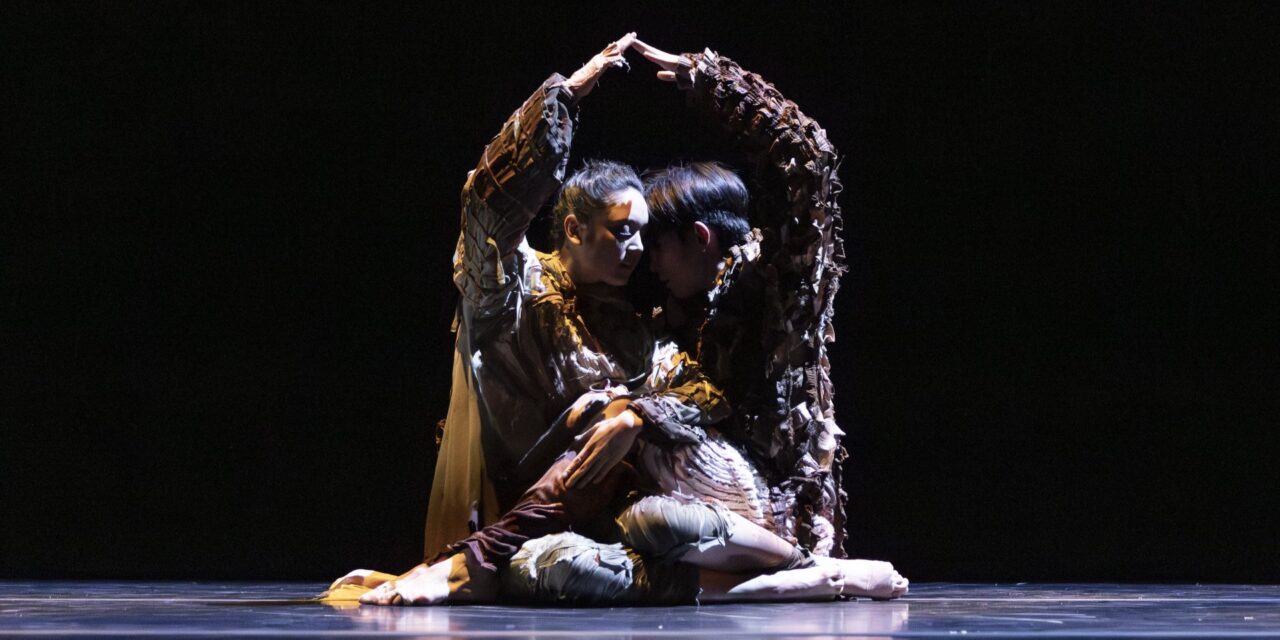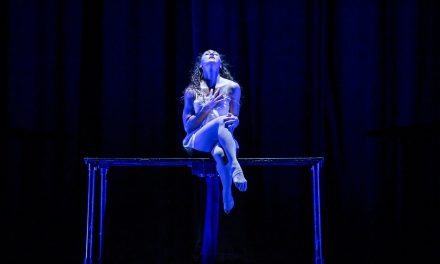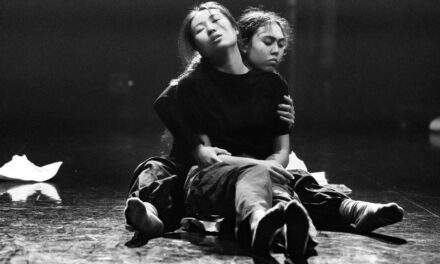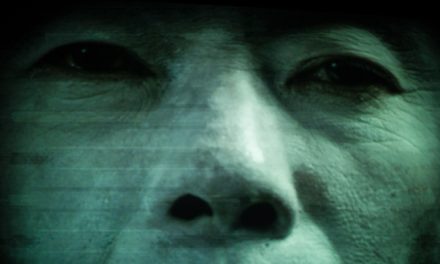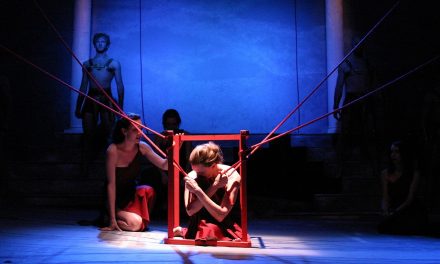On Nov. 7, 2025, Pacific Northwest Ballet premiered a new piece by company members Christopher D’Ariano and Amanda Morgan titled “AfterTime.” Thanks to PNB’s streaming service I was able to watch this as well as “The Window” and “In the Upper Room” this past weekend Nov. 20th thru the 24th. As always, the company dancers performed spectacularly, the sets, the costumes and the lighting were all top notch. The question then becomes did the choreography/direction live up to this rich support system?
“AfterTime” is a conundrum. An edited excerpt from the program states “AfterTime,” is the embodiment of multiple creative partnerships and collaborations and showcases the importance of these connections and crossing boundaries when it comes to interdisciplinary intersections in dance.” This seems a nebulous premise on which to base a dance and therefore what we see on stage is not cohesive. We do see interesting ideas but no full point of view.
The piece begins with two dancers, Leah Terada and Joh Morrill, dressed in sophisticated rags crawling across the very dark stage as if survivors of a nightmarish event. Every move is executed with concentrated despair. Though interesting to watch we do not know who they are or why they are in such circumstances.
Out of the darkness a line of white light flicks across the upstage screen. Is this an alien space ship, we don’t know but soon the light morphs into an interesting black and white 1950’s style Sci-Fi video. The music changes from eerie musicscape to percussive soundscape and on come the aliens which we intuit from their robotic movement. The choreography here often feels like a throwback to a 1960’s idea of how an alien might move and it dips into cliché.
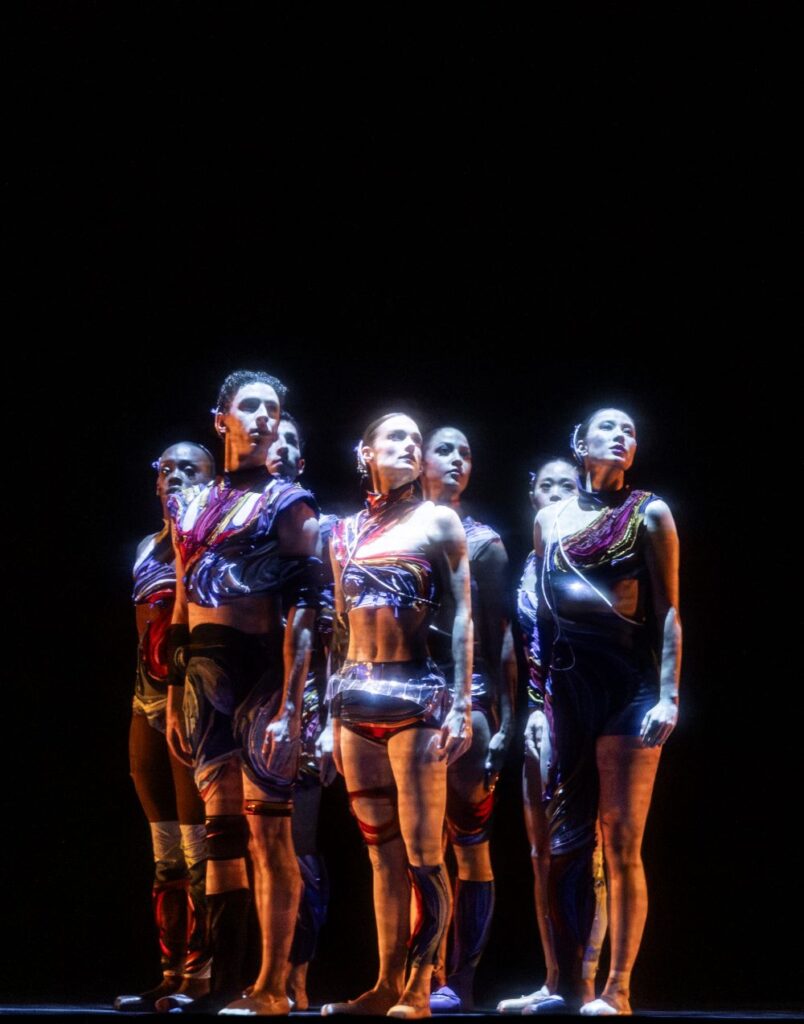
Pacific Northwest Ballet company dancers in the world premiere of Christopher D’Ariano and Amanda Morgan’s “AfterTime” – Photo by Angela Sterling
Throughout, choreographers D’Ariano and Morgan work within the boundaries of contemporary ballet with a modern twist. Their vocabulary is wide and ranging yet occasionally verges on the repetitive. There are two short but nicely executed duets by Ashton Edwards and Connor Horton and by Yuki Takahashi and Noah Martzall which show that these choreographers are capable of more. They share a good sense of staging although sometimes busyness intrudes and focus is lost.
When the two protagonists return to perhaps bring us back to earth, Morrill’s solo work shines as he dances with full commitment. Terada also has a moment with an interesting if twitchy solo which again is carried out perfectly, if only we understood the narrative. Not every dance piece needs a story but if you set up a premise as is done here, then a perspective or clear reference is necessary otherwise interest will wane. Still, these are very young choreographers who have the time to hone their skills and develop their own voice. This, though not perfect, is a good start.
The score by Thomas Nickell and Fiona Stocks-Lyons was what might be thought of as a music-scape with interludes of sound-scapes woven throughout. This is no longer new or innovative and has become all too common in today’s dance world leaving one longing for the hint of a melody or a theme to empower the onstage work, relieve the tediousness and bring the audience into the fold.
Lighting Design by the always reliable Reed Nakayama along with Film and Projection by Henry Wurth added atmospheric tension. Effective Costumes were by Janelle Abbott.
The excellent dancers not mentioned above were; Audrey Malek, Genevieve Waldorf and Lily Wills.

Pacific Northwest Ballet principal dancers Christopher D’Ariano and Elizabeth Murphy in Dani Rowe’s “The Window” – Photo by Angela Sterling.
Dani Rowe’s “The Window,” is an observation of life in five chapters. With music by Shannon Rugani, this was the highlight of the evening. Stellar dancer Melisa Guilliams is living vicariously, watching her neighbors as they wind through the highs and lows of an impassioned love affair. Elizabeth Murphy and Christopher D’Ariano are the lovers. Guilliams as “the Watcher” brings her longing and loneliness to the stage with exquisite dancing and full commitment to her character. The stage lit by Reed Nakayama cleverly becomes two spaces, inside the home of the lovers and outside where the Watcher lingers. This design is perfect in its’ simplicity. Dancing with intensity and desire Murphy and D’Ariano are addicted to each other and addictive to watch. They are tender yet bold, clearly unable to let go, all while unknowingly being watched by the voyeur. Murphy and D’Ariano are impeccable partners both are refined dancers and excellent actors who bring an emotional charge to the stage. Guilliams too fills her part with feelings for the lovers, dancing outside the room with misplaced desire and yearning. When the lovers are no longer together, she grieves as they do, when they return altered, she keeps vigil. In the final sequence the dance of dying love is truly heartbreaking as Rowe clearly understands how to induce emotion from her dancers and from those of us fortunate enough to witness her art. The final scene of Guilliams and Murphy together is deeply moving in surprising ways.
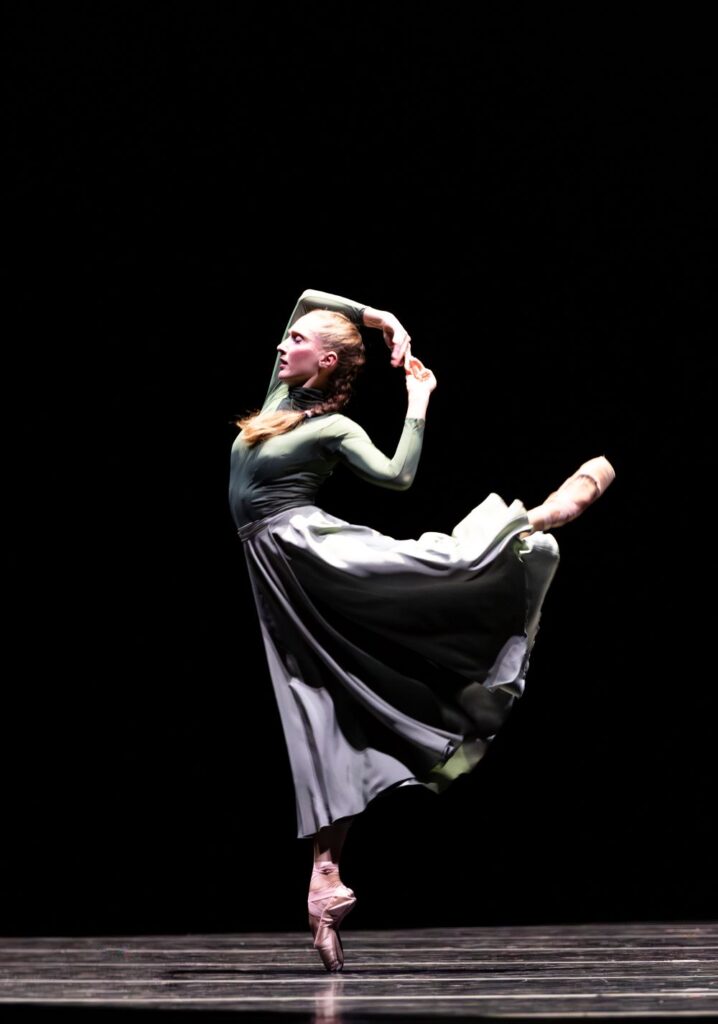
Pacific Northwest Ballet principal dancer Elizabeth Murphy in Dani Rowe’s The Window in Dani Rowe’s “The Window” – Photo by Angela Sterling.
Costumes by Emma Kingsbury were oddly conceived. The dress of the Watcher had sparkle and verve while the lovers were bland especially the plain and slightly ill-fitting dress worn by Murphy.
The final piece of the night was Twyla Tharp’s “In the Upper Room.” Created in 1986 with music by Philip Glass. This work was met with great reviews and audience adulation and brought in a new and unique style to the dance world. Divided into nine sections this 40-minute piece never stops moving as it drives its’ way to the relentlessly jam-packed finale. Relying on her signature style of loosely defined skipping, jumping, ambling movement interspersed with ballet technique was innovative in its’ day, now it shows its’ age. Much of Tharp’s work holds up perfectly and will for centuries to come but this piece feels as if she threw in too many ideas and forgot to edit. The Glass music is again very repetitive and other than building in tempo it brings little to enhance the movement. Unfortunately, this over-choreographed dance suffers from the “too much is not enough” philosophy.

Pacific Northwest Ballet corps de ballet dancer Destiny Wimpye and soloist Kuu Sakuragi in Twyla Tharp’s “In the Upper Room” – Photo by Angela Sterling.
The dancers work very hard to keep up. As the piece develops it is clear that they are winded and tired as near the end several lifts turns and jumps were missed and the timing was off. Still, they were intrepid in their effort as PNB dancers always are.
Knowing that Tharp was in the early stages of her career it is easy to see that she was willing to try anything and everything. Though this approach did not always succeed, it ultimately paid off in allowing her the freedom to invent and create a genre of dance that underlies much of the choreographic work we see currently. With absolute focus and unwavering discipline, she became the true artist and innovator we know today.
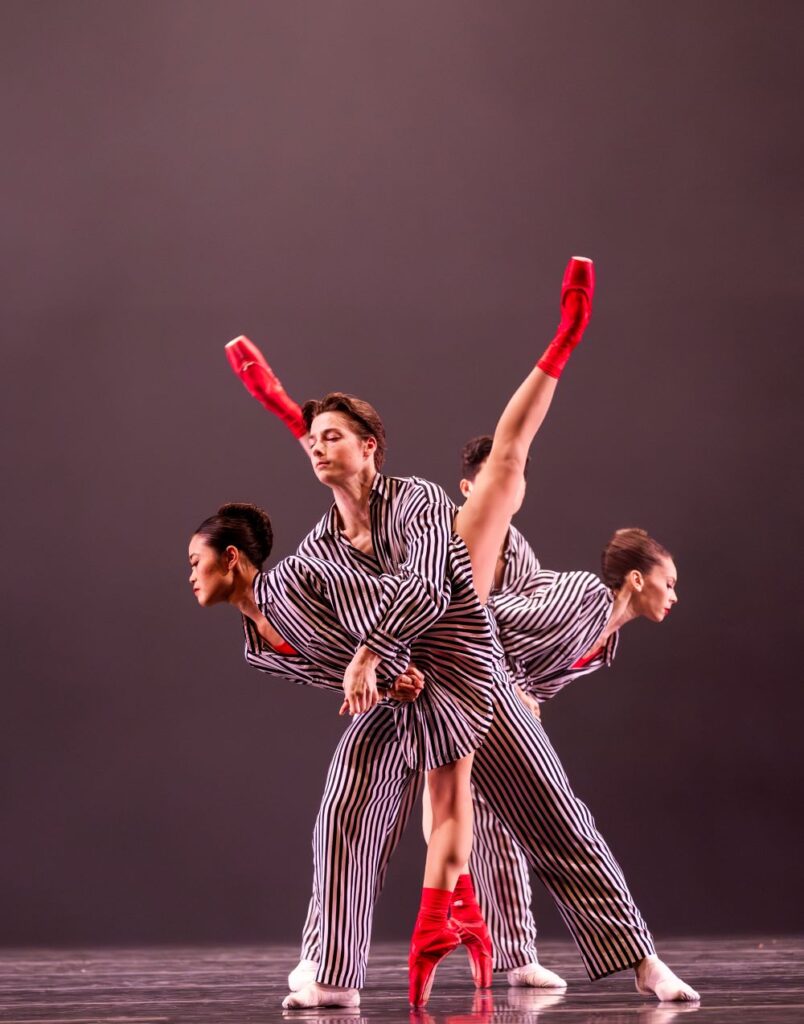
Pacific Northwest Ballet company dancers in Twyla Tharp’s “In the Upper Room” – Photo by Angela Sterling.
The cool black, white and red, Costumes were by Norma Kamli. The Scenic Design was by Santo Loquasto with Lighting by Jennifer Tipton as recreated by Randall G. Chiarelli.
The tireless dancers were; Destiny Wimpye, Melisa Guilliames, Genevieve Waldorf, Madison Ryan Abeo, Luther DeMyer, Noah Martzall, Christopher D’Ariano, Clara Ruf Maldonado, Kuu Sakuragi, Yuki Takahashi, Dylan Calahan, Leta Biascucci and Lucien Postlewaite.
To learn more about Pacific Northwest Ballet, please visit their website.
Written by Tam Warner for LA Dance Chronicle.
Featured image: Pacific Northwest Ballet soloist Leah Terada and corps de ballet dancer Joh Morrill in the world premiere of Christopher D’Ariano and Amanda Morgan’s AfterTime – Photo by Angela Sterling.

